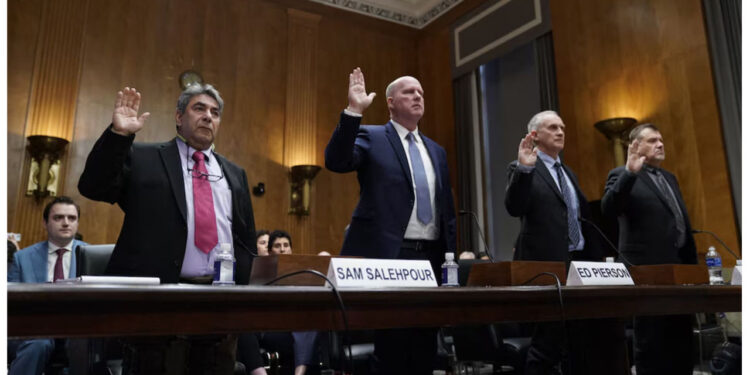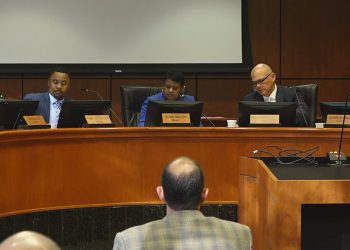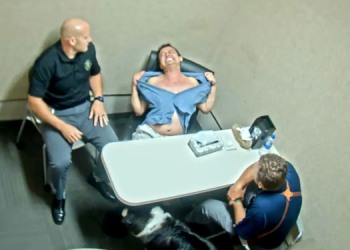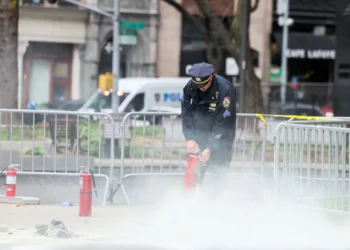Boeing faced criticism for its safety culture during a recent U.S. Senate hearing. The hearing included testimony from a whistleblower who shed light on the company’s production methods following the door plug blowout incident at Alaska Airlines.
Boeing engineer Sam Salehpour, who bravely came forward earlier this month regarding the company’s production of the 787 and 777 jets, was one of the four witnesses who testified before the Senate Committee on Homeland Security & Governmental Affairs’ Permanent Subcommittee on Investigations.
In his testimony, Salehpour stated that after analyzing Boeing’s data, he has come to the conclusion that the company is implementing manufacturing shortcuts on the 787 program. He further expressed concern that these shortcuts may have a substantial impact on the safety of the aircraft and its overall lifecycle.
According to Salehpour, the 787 program has been plagued with significant problems since 2013. He characterized these issues as “gaps in the assembly of the fuselage” of the 787. Salehpour further alleged that Boeing resorted to applying “excessive force” to forcefully join the fuselage pieces and conceal the existence of these gaps. He claimed that shims were missing in 98.7% of the instances where they were supposed to be present.
“I witnessed people energetically leaping onto the aircraft fragments, determined to align them,” Salehpour commented on the bustling 777 production line. “I affectionately refer to it as the Tarzan effect.”
According to Salehpour, he was disregarded and instructed to remain silent. His superior even went as far as to say that he would have reacted violently towards anyone who made the same statement as Salehpour.
The Federal Aviation Administration is currently investigating Salehpour’s claims concerning the production of the 787 and 777 aircrafts.
Boeing has denied Salehpour’s allegations about the structural defects of the aircraft and expressed full confidence in the safety of both models.
Boeing stated prior to the hearing that in its 13 years of service, the global 787 fleet has safely transported over 850 million passengers on more than 4.2 million flights. They emphasized that a 787 aircraft can operate safely for a minimum of 30 years before requiring expanded airframe maintenance routines. Furthermore, rigorous testing of the fuselage and thorough maintenance checks on almost 700 in-service airplanes have revealed no evidence of airframe fatigue. Boeing has diligently inspected and improved production quality to meet stringent standards, with precision measured to the one hundredth of an inch, under the supervision of the FAA.
According to Boeing, the 777 fleet has safely transported over 3.9 billion passengers worldwide, making it the most successful widebody airplane family in aviation history.
After the hearing, Boeing firmly stated that they strictly prohibit any form of retaliation.
Boeing faced severe scrutiny following the incident on Jan. 5 when a door plug blew out of an Alaska Airlines flight. The National Transportation Safety Board (NTSB) conducted an investigation and discovered that the 737 Max aircraft had been installed without four bolts.
During last month’s Senate Commerce Committee hearing, NTSB Chair Jennifer Homendy revealed that Boeing has failed to provide the records pertaining to the work on the door plug. According to Homendy, Boeing claimed that they were unable to locate these records.
During Wednesday’s Senate hearing, Ed Pierson, the executive director of the Foundation for Aviation Safety and a former Boeing manager, revealed that he had been given the records by a whistleblower. Pierson further stated that he subsequently handed over these records to the FBI.
“I won’t mince words here. This is a blatant attempt to hide criminal activity,” Pierson asserted. “Let me be clear, there are records that undeniably exist. I can vouch for this as I personally handed them over to the FBI.”
According to Pierson, the records have been accessible for quite some time. However, he has not yet released them to the public.
ABC News reached out to the FBI Seattle spokesperson for comment on Pierson’s assertion that he had handed over Boeing records to the FBI, but they declined to provide any comment.
Boeing directed ABC News to Homendy’s statements during the Senate hearing on April 10. During the hearing, Homendy described the absence of records as a deviation from the usual procedures. She acknowledged that Boeing has supplied the NTSB with all the requested documents that do exist, but also emphasized that they are aware of the missing record. Homendy expressed shared concern over the situation and the need to address it, stating that they are collaborating to determine what transpired and find a solution for the future.
In a statement addressing Pierson’s testimony, the NTSB acknowledged Homendy’s reaffirmation during the April 10 hearing. Homendy emphasized that Boeing had informed the NTSB that they did not possess any documentation outlining the procedures for opening, closing, and securing the door plug that ruptured on Alaska Airlines flight 1282 on January 5.
According to the statement, the NTSB has not received any documentation from Boeing or any other entity.
During his testimony on Wednesday, Pierson, who parted ways with Boeing six years ago, shed light on the safety culture within the company. He emphasized that the manufacturing conditions responsible for the two 737 Max disasters were also to blame for the Alaskan blowout accident, and stressed that these conditions still persist.
The tragic accidents of two Boeing 737 Max jets, namely Lion Air Flight 610 in 2018 and Ethiopian Airlines Flight 302 in 2019, resulted in the loss of 346 lives. It was determined that both crashes were caused by a faulty flight control system. As a result, the Max was taken out of service for a period of 20 months before it was deemed safe to resume operations in December 2020.
Pierson expressed her lack of surprise at the recently revealed production quality issues at Boeing. She explained that her lack of astonishment stems from the fact that nothing has changed since the two crashes that occurred earlier. According to Pierson, government authorities turned a blind eye to Boeing’s manufacturing problems until the Alaska accident. She believes that passengers should not have to depend on whistleblowers to uncover the truth in such matters.
Joe Jacobsen, a former FAA engineer and aerospace engineer who currently serves as a technical adviser to the Foundation for Aviation Safety, emphasized that a multitude of unsafe conditions stemming from both manufacturing and design defects have been identified since the reintroduction of the 737 Max in 2020. According to Jacobsen, this indicates a widespread issue within the company.
According to Shawn Pruchnicki, a professional practice assistant professor of integrated systems engineering at Ohio State University, he believes that Boeing’s problems, including the two Max crashes, were solely driven by financial considerations.
“It makes me question if we have regressed at Boeing. The Alaska Airlines incident strongly reinforces that notion,” he remarked.
Sen. Richard Blumenthal, a Democrat from Connecticut and the chairman of the Permanent Subcommittee on Investigations, expressed his astonishment at the testimony, describing it as “shocking.”
He stated that there are serious allegations mounting against Boeing, accusing the company of having a broken safety culture and engaging in unacceptable practices.
At the end of the hearing, Blumenthal mentioned that there will be a 15-day period during which questions or documents can be submitted.
He expressed his hope that more individuals would step forward.
The senator expressed their intention to reach out to the Department of Justice to demonstrate their willingness to collaborate with them in their investigation into Boeing.
The senators conducted the hearing for a little over 90 minutes, stating their intention to proceed with impeachment proceedings against Homeland Security Secretary Alejandro Mayorkas.
Boeing stated after the hearing that they have been actively working to promote a safety culture since 2020. During this time, they have taken significant measures to empower and encourage their employees to speak up and voice any concerns they may have.
“We acknowledge that there is still more work to be done, and we are actively taking steps to address this within our organization,” stated Boeing. They further added, “In the span of January 2024, we have witnessed a significant surge of over 500% in employee reports through our ‘Speak Up’ portal, as compared to the previous year. This notable increase indicates progress towards fostering a reporting culture that encourages employees to come forward without fear of reprisal.”
The statement emphasized that safety and quality remain the top priority, and the company is committed to transparently sharing information with regulators, customers, and other stakeholders.
Two days prior to the hearing, Boeing conducted a press tour of its factory in North Charleston, South Carolina. The purpose of the tour was to provide a detailed explanation of Boeing’s engineering process in response to the allegations made by Salehpour.
Boeing, the company, has revealed that it conducted extensive fatigue testing on its 787 Dreamliner. This test, spanning 165,000 flight cycles, is considered to be the longest fatigue test ever conducted on a commercial airplane. It took Boeing a total of five years to complete this rigorous testing. Remarkably, the company found no evidence of fatigue in the 787’s composite structure at the conclusion of the testing process.
Lisa Fahl, the vice president of engineering for airplane programs at Boeing Commercial Airplanes, emphasized the company’s commitment to fostering a culture of open communication. In an interview with reporters, she highlighted the importance of encouraging employees to voice their opinions and concerns.












